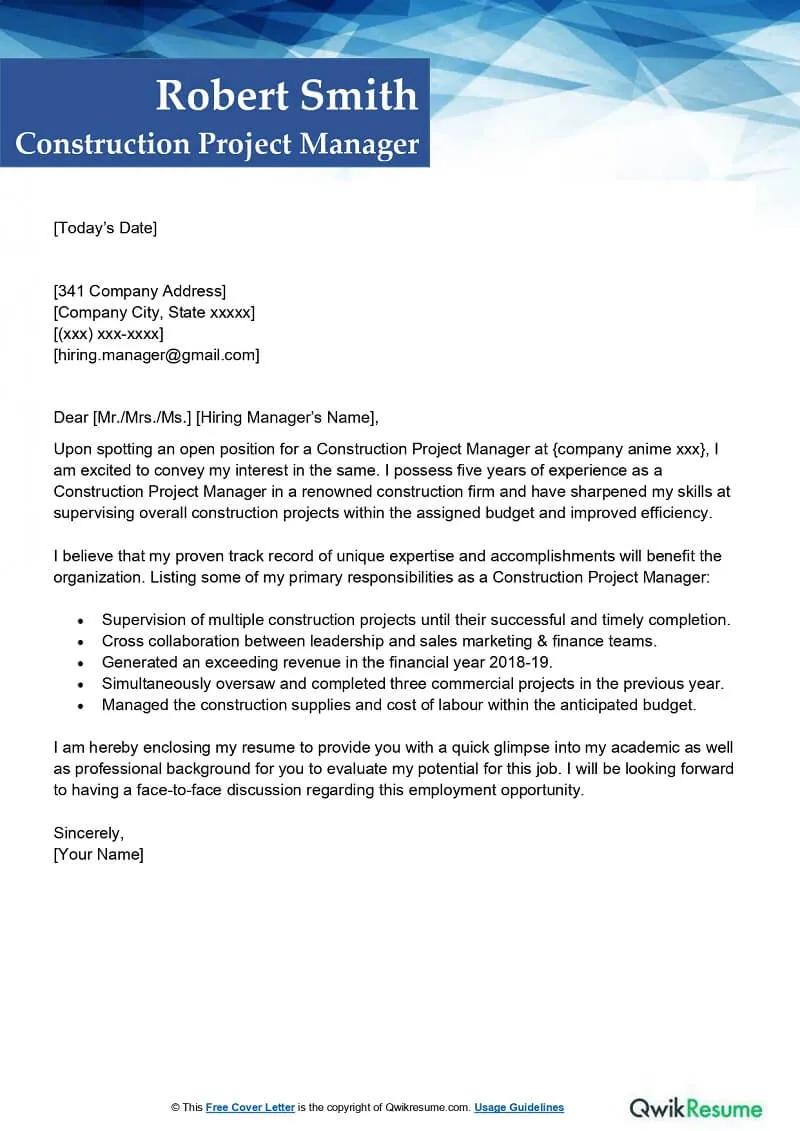Crafting a Project Manager Cover Letter that Impresses
A well-crafted cover letter is your first opportunity to make a strong impression on a potential employer. For a construction project manager, this document is crucial. It is the initial introduction, and it should present your skills, experience, and enthusiasm for the specific role. The goal is to secure an interview. A generic or poorly written cover letter can be an immediate disqualifier. Therefore, you need a cover letter that stands out and highlights your value proposition. It should be concise, compelling, and tailored to the specific job requirements. A professional cover letter, when crafted carefully, can significantly increase your chances of landing your dream job.
Understanding the Importance of a Cover Letter
Why is a cover letter so important for a construction project manager? It provides a space to explain your resume in more detail. Your resume contains your qualifications but the cover letter gives you the opportunity to provide a narrative, to showcase your personality and your communication skills. The resume is a summary, the cover letter gives the depth that an employer needs to find out if you are a good match. Furthermore, a well-written cover letter demonstrates your interest in the company and the specific role. It shows you’ve done your research and understand what the employer is looking for. This shows you are serious about the position and that you’ve carefully considered how your skills align with the company’s needs and company’s goals.
Highlighting Your Construction Project Management Skills
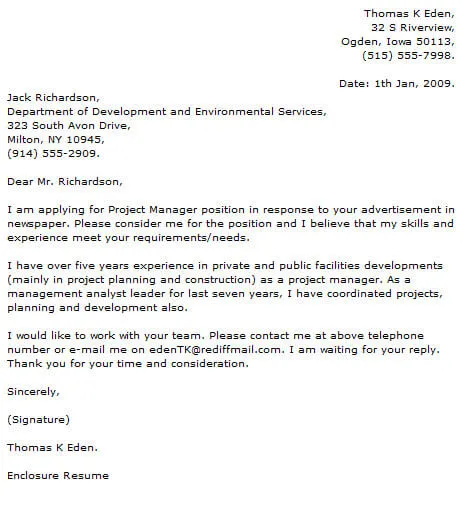
In construction project management, it’s essential to highlight a range of skills. The cover letter is where you showcase this breadth of expertise. Your focus should be on showcasing what you can bring to the table, emphasizing your achievements and specific experiences, while tailoring your narrative to the target role. This means carefully reviewing the job description and highlighting the skills and experiences that align with the employer’s requirements. The goal is to show how you have successfully managed projects, overcome challenges, and delivered results. This will make your application stand out from the competition and show why you’re the best candidate.
Key Skills to Showcase in Your Cover Letter
Construction project managers need a mix of technical, leadership, and communication skills. Your cover letter should emphasize these areas. This section should focus on specific examples. Describe how you’ve successfully used these skills in the past. This approach transforms your cover letter from a list of responsibilities into a narrative of accomplishments. Show that you are capable of leading a team, problem-solving, and delivering projects on time and within budget.
Technical Expertise
Technical expertise is foundational for construction project managers. This includes proficiency in construction methods, building codes, and relevant software. When writing your cover letter, mention specific software you’re familiar with, such as AutoCAD, Revit, or project management tools. Illustrate your understanding of building systems, materials, and construction processes. If you have certifications like PMP (Project Management Professional) or other relevant credentials, be sure to include these. These demonstrate your commitment to the profession and your knowledge.
Project Planning and Execution
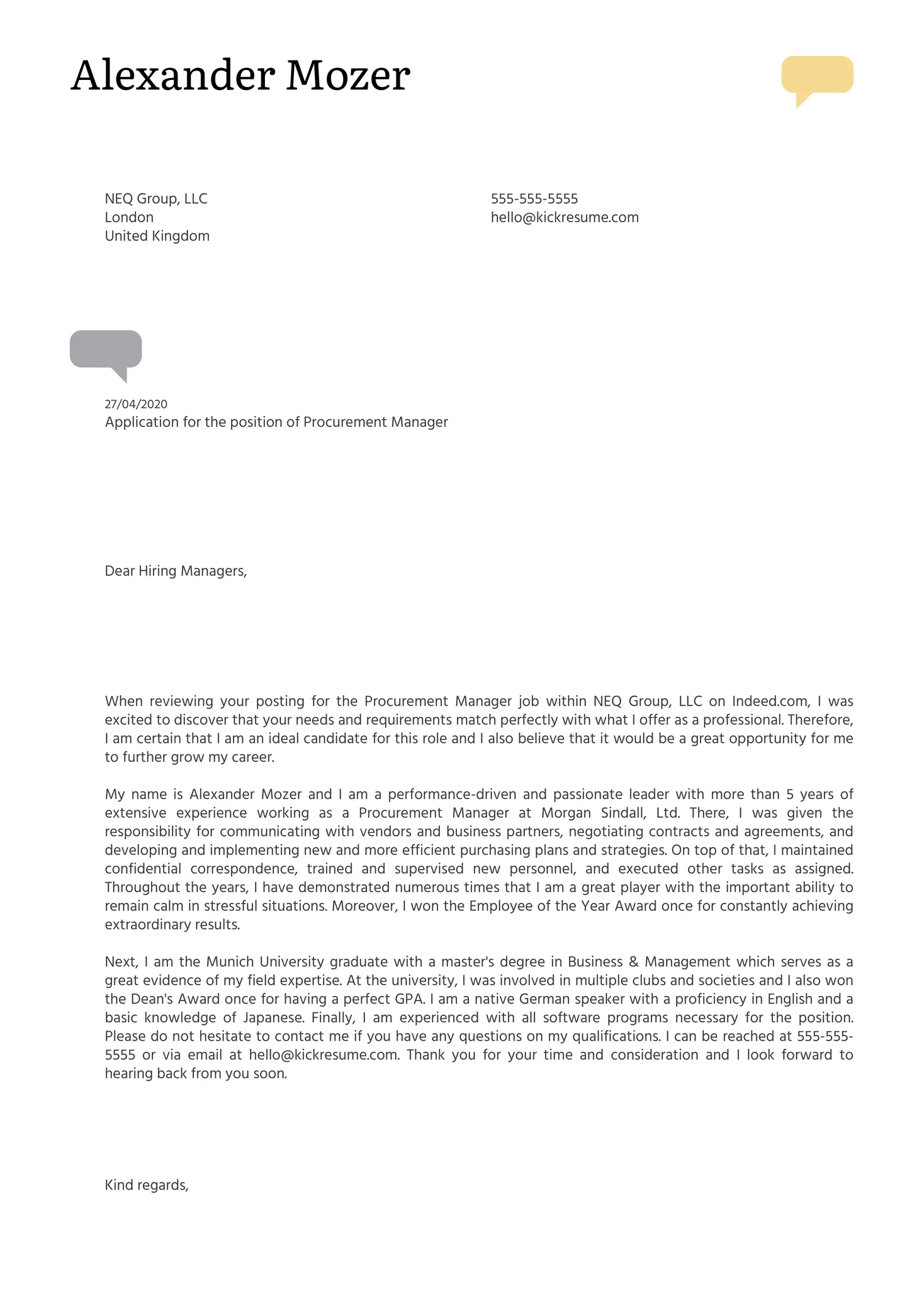
Project planning and execution skills are central to any construction project manager’s role. Highlight your ability to develop project plans, manage schedules, and control budgets. Provide examples of how you’ve successfully managed project timelines, mitigated risks, and ensured projects were completed on time and within budget. Mention your experience with creating and tracking project schedules, managing resources, and coordinating different teams. Also, you might want to mention your experience in creating and managing budgets for construction projects.
Leadership and Team Management
Construction project managers must be effective leaders. Your cover letter should highlight your leadership abilities. Give examples of how you motivate and manage teams. Focus on the ability to delegate tasks, provide guidance, and resolve conflicts. If you’ve led a team to achieve a particular goal, such as completing a project ahead of schedule or under budget, include this information in your cover letter. Highlight your interpersonal skills and how you build positive working relationships with team members and stakeholders.
Communication and Stakeholder Management
Effective communication is essential in construction project management. Mention your communication abilities, including your ability to present project updates clearly and concisely. Give examples of how you’ve successfully managed stakeholder expectations, and resolved conflicts. Show you can create and present reports and communicate with a wide variety of people. Emphasize your ability to listen and understand different perspectives. Describe how you’ve effectively communicated with clients, contractors, and other stakeholders.
Quantifying Your Achievements
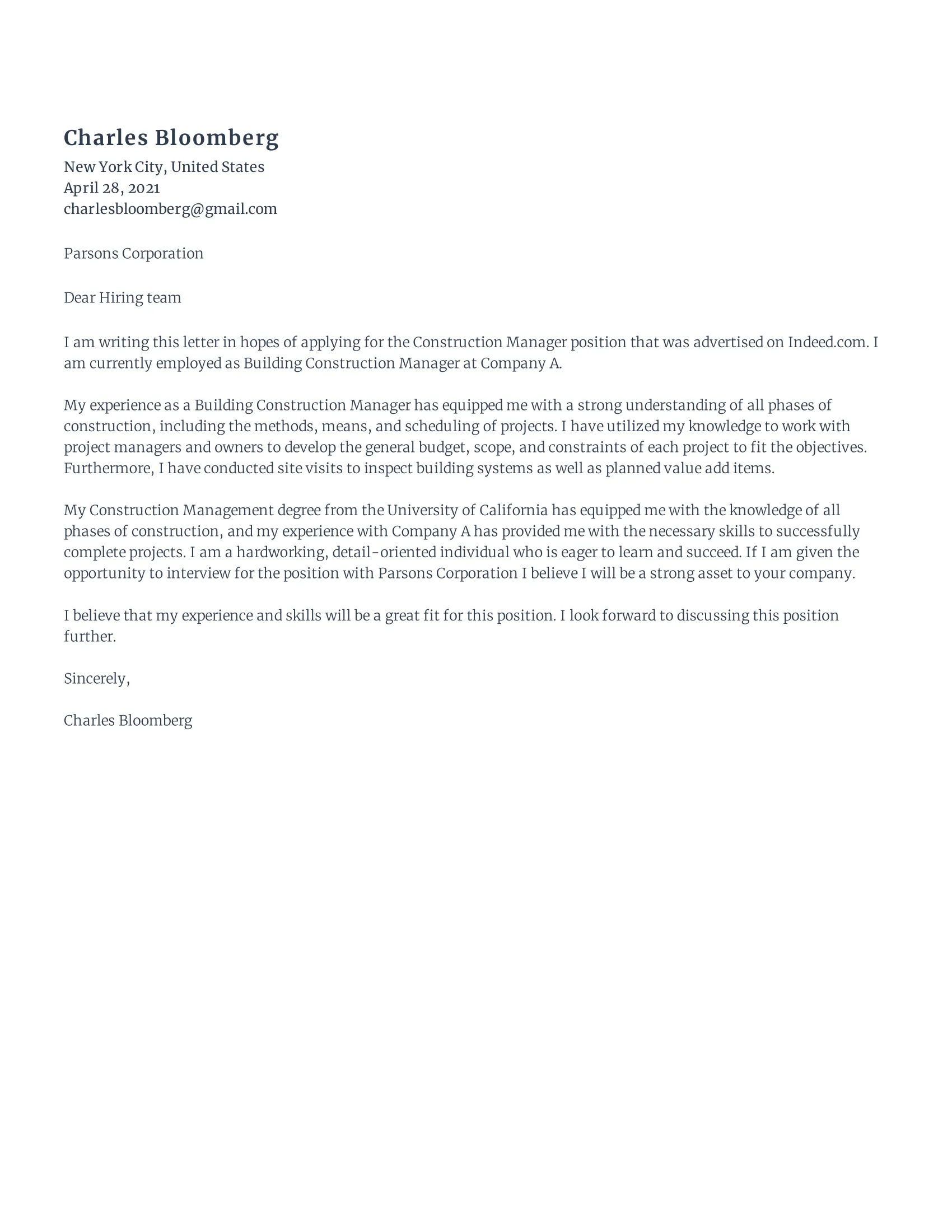
Employers are interested in results. Provide specific numbers and data to demonstrate your achievements. This makes your cover letter more impactful and gives the employer tangible evidence of your skills and capabilities. Always provide data to show your value. This will make you a more competitive applicant and will help make you stand out.
Providing Measurable Results
Instead of saying ‘managed projects successfully,’ provide the numbers. For example, ‘Completed projects on average 15% under budget’ or ‘Improved project delivery times by 20%.’ This shows how you bring value to the table. Other data you could provide include the number of projects you have managed, or the value of projects you’ve delivered. The more you can provide hard data, the better.
Using Action Verbs to Describe Your Accomplishments
Start each bullet point with a strong action verb. Instead of saying ‘Responsible for,’ use words like ‘Managed,’ ‘Led,’ ‘Implemented,’ ‘Oversaw,’ or ‘Coordinated.’ These verbs create a more dynamic and compelling narrative. This adds emphasis to your responsibilities. This also makes your cover letter more engaging to read. Action verbs are also good in resumes, they show how you approached each problem, each task, and each project, and that you have the knowledge to go forward in the industry.
Tailoring Your Cover Letter to the Job Description
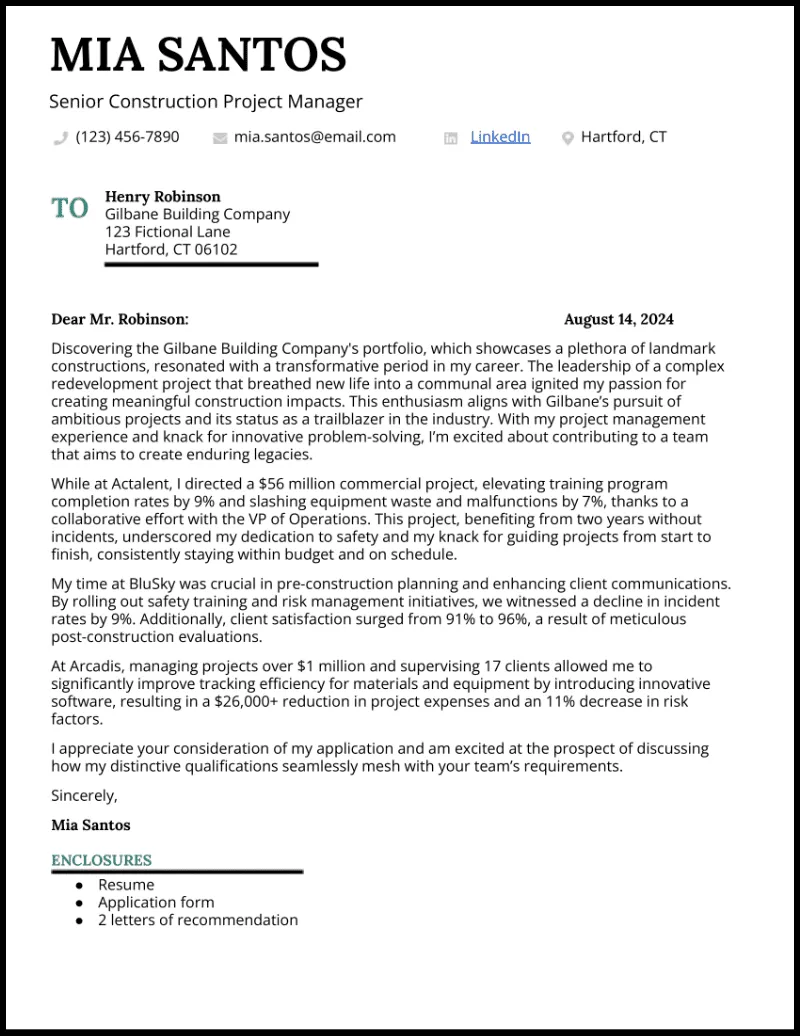
Each application should be customized to the specific job. Generic cover letters don’t leave a good impression, especially if you’re applying for such a specialized industry. Review the job description carefully, and identify the key requirements. Then, ensure your cover letter highlights the skills and experience that align with those requirements. This shows that you understand what the employer is looking for and that you have the skills needed to succeed in the role. Customizing the cover letter gives a better chance of standing out in a competitive job market.
Researching the Company and Its Projects
Before writing your cover letter, research the company. This helps you tailor your letter to their specific needs. Visit their website, review their recent projects, and understand their company values. You should tailor your language to align with the company’s culture. This also demonstrates your genuine interest in the company. Show you understand their work, and have considered how your skills and experience can contribute to their success.
Matching Your Skills and Experience to the Requirements
Align your skills and experience with the job requirements. Identify the keywords in the job description, and incorporate them into your cover letter. For each requirement, provide a brief example of how you have demonstrated that skill in the past. This helps the employer see how your skills align with what they’re looking for. If the job ad says it needs someone to solve problems, you should give an example of how you solved a problem in the past.
Structuring Your Cover Letter for Maximum Impact
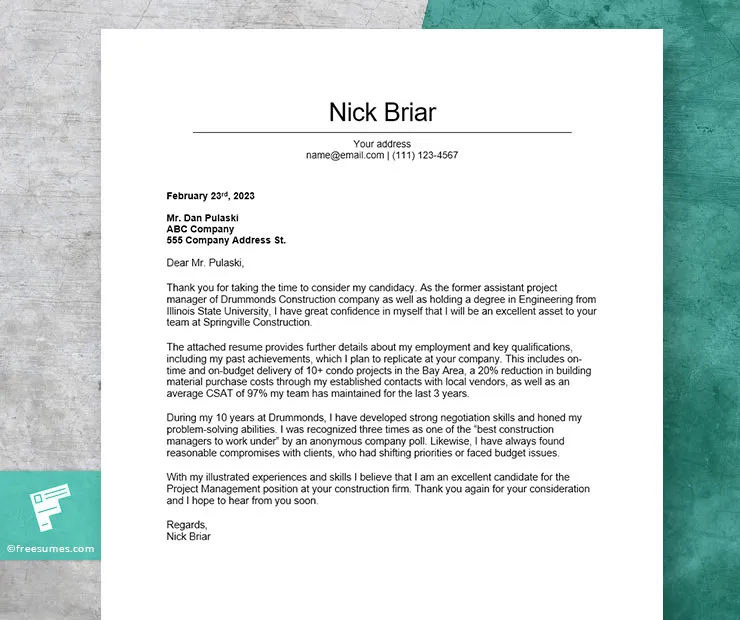
The structure of your cover letter is crucial. A well-organized cover letter is easy to read and makes a strong impression. The best format will include an introduction, body paragraphs and a closing statement. Each section should have a clear purpose, and the flow of information should be logical and easy to follow. Proper structure ensures your key skills and achievements are highlighted and remembered. You should always use professional language, and avoid jargon or overly complex sentences.
Formatting Your Cover Letter Professionally
Formatting is important. Use a clean, professional font like Times New Roman or Arial. Use a 1-inch margin and single-space your paragraphs. Keep the letter concise, ideally no more than one page. Use headings and bullet points to break up the text and make it easier to read. Maintain a consistent format throughout the document, and make sure the layout is easy on the eyes. Clean and easy to read will help you stand out from the crowd.
Writing a Compelling Opening Paragraph
The opening paragraph sets the tone for the rest of the cover letter. Start with a strong hook, and state the position you’re applying for. Express your enthusiasm for the role and the company. Immediately highlight your most relevant skill or experience. Be specific and get to the point quickly. This shows that you respect the reader’s time. A strong opening paragraph will grab the reader’s attention. It can also set a positive tone, which will encourage the employer to read the rest of the cover letter.
Elaborating on Your Relevant Experience
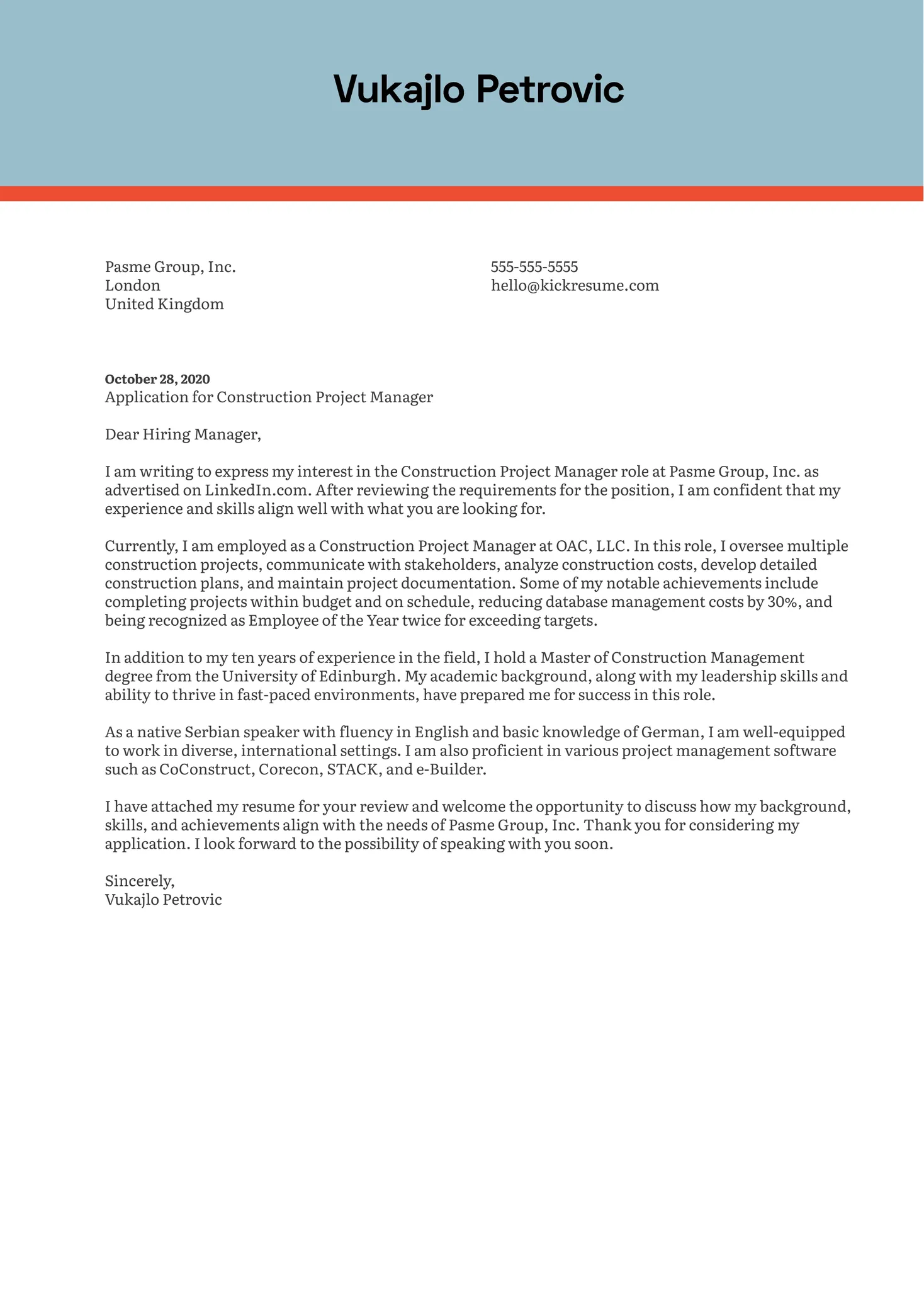
The body of your cover letter should elaborate on your key skills and experiences. Focus on the most relevant aspects of your experience. Support each claim with specific examples, using the STAR method (Situation, Task, Action, Result) to structure your examples. Be sure to tailor the examples to the job description. Demonstrate how your experience makes you the ideal candidate for the role. Show the employer the value you can bring by making your experiences relatable.
Creating a Strong Closing Statement
The closing statement should reiterate your interest in the position and thank the employer for their time and consideration. Reiterate why you’re a good fit for the role. Include a call to action. Be specific about the next steps you’re hoping for. Make sure the tone is professional and enthusiastic. Your closing statement should be memorable. It’s the last impression you’ll leave with the employer, so you want to make sure it’s a good one.
Proofreading and Editing Your Cover Letter
Proofreading and editing your cover letter is essential. This helps to ensure that your cover letter is professional and error-free. A cover letter that has typos or grammatical errors can reflect poorly on you. This can show a lack of attention to detail. Take the time to carefully review your cover letter. Read it aloud, and ask a friend or colleague to review it. This reduces any mistakes. Be sure to check for grammatical errors, spelling mistakes, and formatting inconsistencies. A polished cover letter is your opportunity to make a strong first impression.
Common Mistakes to Avoid
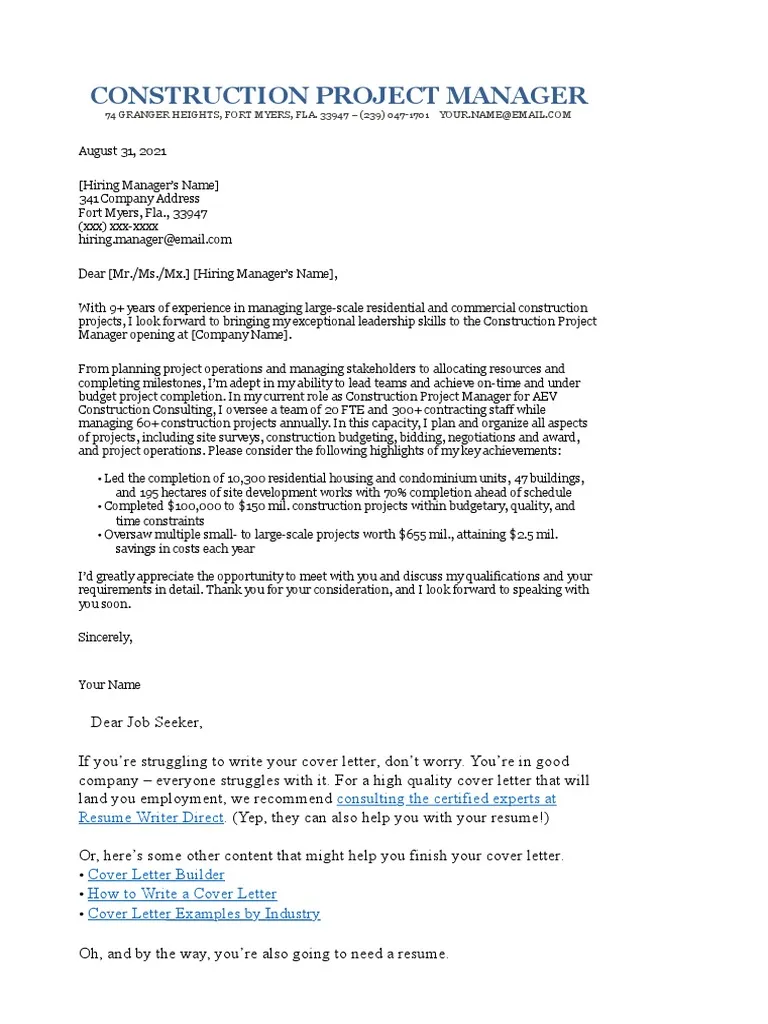
There are common mistakes that can reduce your chances of getting hired. Avoid these pitfalls to ensure that your cover letter effectively showcases your skills. Poorly written cover letters can send the wrong message. Being aware of these mistakes helps you avoid them.
Typos and Grammatical Errors
Typos and grammatical errors undermine the credibility of your cover letter. They show a lack of attention to detail. Proofread your cover letter carefully. Use spell-check and grammar-check tools, but don’t rely solely on these tools. Read it aloud, or have someone else proofread it for you. Errors give a negative impression, and can make it more difficult for the employer to take you seriously. Double-check your cover letter and make sure that your sentences and words make sense.
Generic Cover Letters
Generic cover letters don’t impress. They show a lack of interest in the specific job and company. Customize your cover letter for each application. Research the company. Highlight the skills and experiences that align with the job description. A tailored cover letter shows that you’ve invested time and effort, which makes it more likely that the employer will take notice of your application. Generic cover letters will get filtered out, so it’s important to show that you put in the work to personalize your letter.
Failing to Quantify Achievements
Failing to quantify your achievements makes your cover letter less impactful. Use numbers and data to demonstrate your successes. Instead of saying ‘Managed projects,’ say ‘Managed projects with budgets up to $10 million, and delivered them on time and within budget.’ Quantifiable achievements make your accomplishments more real. They give the employer a clear understanding of your capabilities. Include data in your cover letter whenever possible.
Formatting and Presentation Tips
Good formatting and presentation are essential for making a positive impression. Well-formatted documents are easy to read and more likely to be noticed. Proper formatting helps convey your message effectively. Using good formatting shows that you care about professionalism. Consider these tips.
Using a Clear and Concise Writing Style
Use clear, concise language. Avoid jargon and overly complex sentences. Get to the point, and use active voice. Make sure the writing is easy to understand. A clear and concise writing style will make your cover letter easier to read. If you use simple language, it will also make the letter more impressive. Clear writing ensures that your key points are easily understood.
Including a Call to Action
Include a clear call to action in your closing paragraph. Let the employer know what steps you are hoping for. This could be a request for an interview or a meeting. Make sure you are enthusiastic. Be specific about your intentions. A call to action increases your chances of moving forward in the hiring process. Having a clear call to action reinforces your interest in the role and motivates the employer to take the next step.
Reviewing and Refining Your Cover Letter
Writing a good cover letter is an ongoing process. Review and refine your cover letter. Make changes based on feedback and your experiences. Be sure that your cover letter is always up-to-date and ready to use. This iterative approach ensures that your cover letter always reflects your skills and experiences. Reviewing and refining your cover letter will continue to improve your chances of getting the job.
